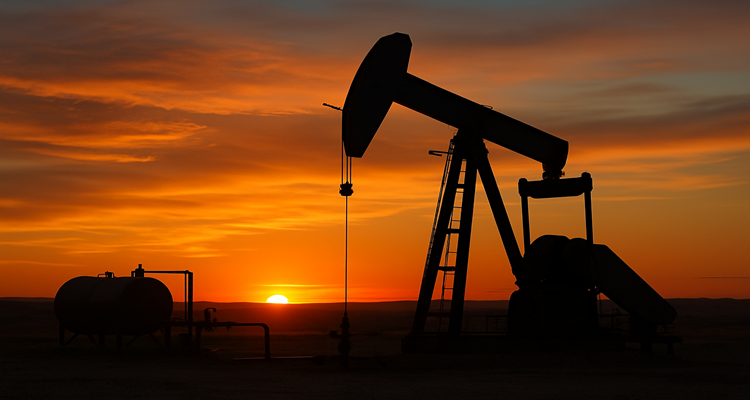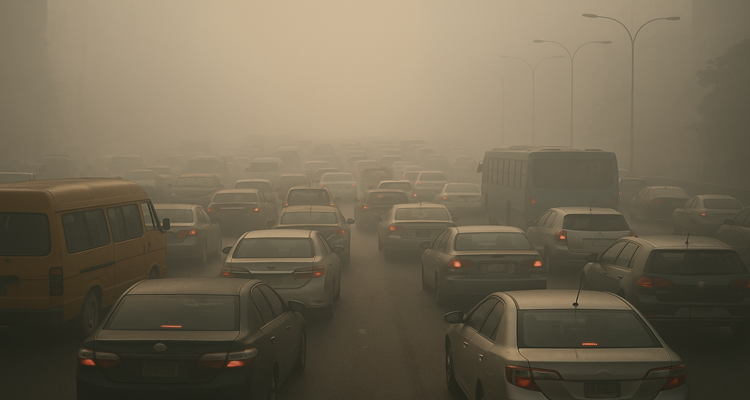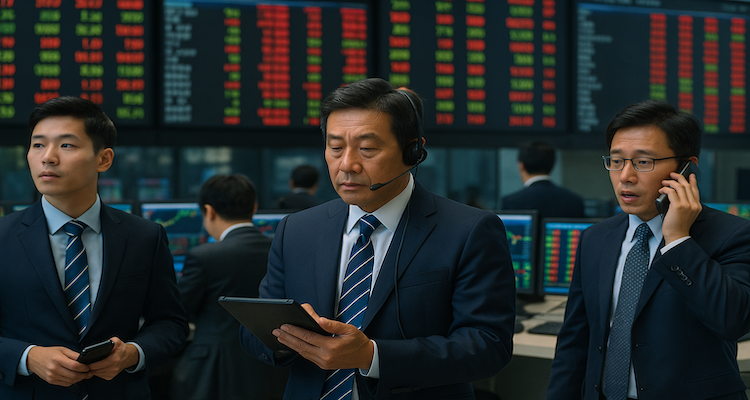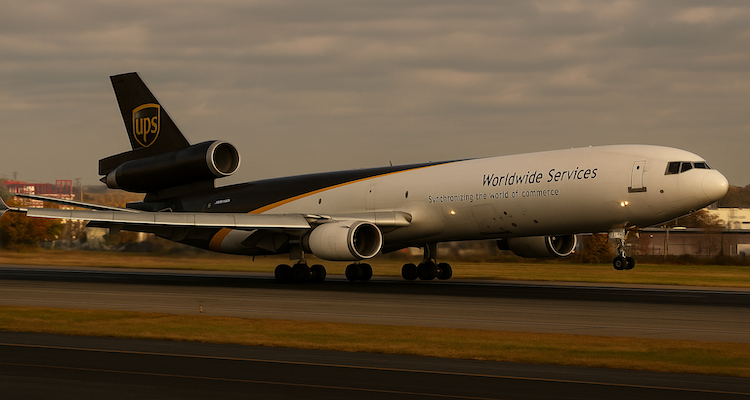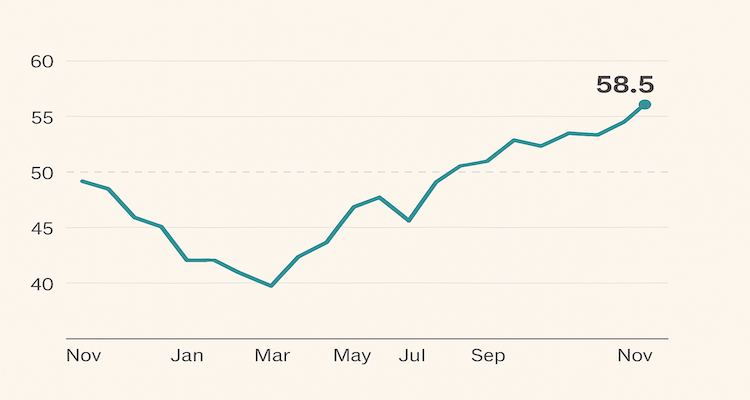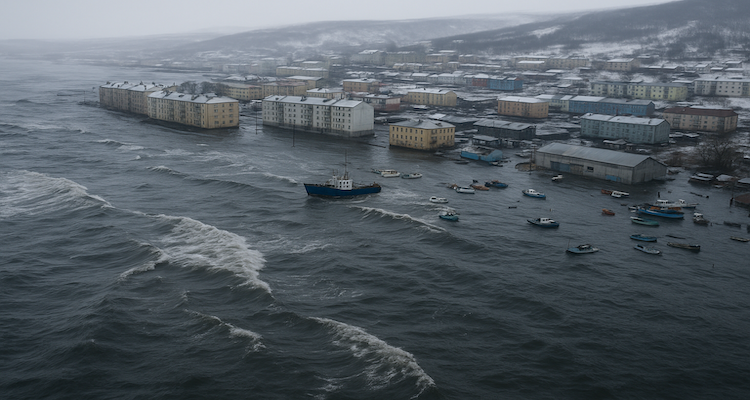Massive Quake Off Kamchatka Sparks Tsunami Alerts Across Pacific
An 8.8-magnitude earthquake near Russia’s Kamchatka Peninsula triggered Pacific-wide tsunami alerts, damaging infrastructure and causing volcanic eruptions.
⚠️ Powerful Kamchatka Quake Sends Shockwaves Across the Pacific
A massive 8.8-magnitude earthquake struck off the coast of Russia’s remote Kamchatka Peninsula on Wednesday, rattling buildings, prompting tsunami alerts across the Pacific, and unleashing the fury of one of the world’s most active volcanoes. From Hawaii to Japan and as far away as French Polynesia and Chile, emergency systems buzzed into action as authorities braced for dangerous waves.
️ Earthquake Strikes in a Volatile Region
The earthquake hit a seismically active zone known as the Pacific Ring of Fire, where tectonic plates frequently collide. According to the U.S. Geological Survey, the tremor originated just 119 kilometers southeast of Petropavlovsk-Kamchatsky, a city home to about 165,000 people, and at a shallow depth of 19.3 kilometers increasing its destructive potential.
Russian seismologists confirmed it was the strongest earthquake in the region since 1952. Occurring on a megathrust fault, the quake resulted from the Pacific Plate pushing beneath the North American Plate, a geological recipe for large-magnitude events.
Tsunami Warnings Ripple Across Nations
The immediate concern wasn’t just the shaking it was the water. Tsunami warnings were swiftly issued across vast swathes of the Pacific, including parts of Russia, Japan, Hawaii, Chile, and the remote islands of French Polynesia.
-
In Japan, evacuation orders were issued for coastal regions, including areas previously devastated by the 2011 tsunami.
-
Hawaii recorded wave heights up to 1.7 meters, briefly halting flights at Honolulu International Airport.
-
In Canada, minor wave activity reached British Columbia, but the advisory was later lifted.
-
California’s coast saw half-meter waves, while Ecuador’s Galápagos Islands ordered precautionary evacuations.
In French Polynesia, tsunami waves reached the Marquesas Islands early Wednesday. Local officials warned residents to move inland, anticipating waves as high as 2.5 meters. By mid-day, the swells were less severe than expected, although still capable of causing damage.
Destruction in the Russian Far East
Although casualties were avoided, several people were injured in Russia’s Kamchatka region, and buildings suffered structural damage. In Severo-Kurilsk, on the Kuril Islands, tsunami waves reached heights of 5 meters, flooding the town’s port and a fish processing facility. Video footage verified by regional authorities showed boats torn from their moorings and shoreline facilities engulfed in water.
In Petropavlovsk-Kamchatsky, a young resident described the experience vividly:
“It felt like the walls might cave in at any moment. The shaking lasted for what seemed like forever at least three minutes,” said Yaroslav, 25.
The Russian Emergency Ministry credited strict building codes and effective emergency protocols for preventing fatalities. “Our systems worked as designed,” said Kremlin spokesman Dmitry Peskov.
Kamchatka’s Fiery Volcano Joins the Chaos
Adding to the region’s turmoil, the Klyuchevskoy volcano one of the world’s tallest and most active erupted just hours after the quake. The United Geophysical Service of the Russian Academy of Sciences reported lava flows on the western slope and explosive activity lighting up the night sky. Klyuchevskoy is located about 450 kilometers north of Petropavlovsk-Kamchatsky.
This dual natural disaster underscored Kamchatka’s volatile geology and further strained emergency response teams.
Expert Insight & Public Preparedness
Experts believe the quake’s power was amplified by its shallow depth and the fault’s location. Scientists caution that aftershocks and further volcanic activity could follow in the days ahead.
In a dramatic illustration of resilience and calm under pressure, surveillance footage from a Petropavlovsk-Kamchatsky hospital showed surgeons stabilizing a patient mid-operation as the quake rocked their operating room. They steadied equipment and continued the procedure without pause a moment that has since gone viral in Russia.
Meanwhile, Japan’s Chief Cabinet Secretary Yoshimasa Hayashi assured the public that nuclear plants, including the troubled Fukushima site, reported no abnormalities or safety breaches. Workers at the Fukushima plant were temporarily evacuated as a precaution.
Aftershocks, Recovery, and What Lies Ahead
While most tsunami advisories have since been downgraded or lifted, emergency teams remain on alert. The possibility of strong aftershocks or renewed volcanic activity cannot be ruled out.
For coastal communities particularly those built on low-lying atolls in the Pacific the threat of tsunami surges remains a long-term challenge as climate change and seismic volatility intersect.
Authorities across the Pacific praised the effectiveness of early warning systems, which allowed many to evacuate ahead of any catastrophic wave impact. However, the events serve as a sobering reminder that the Ring of Fire remains one of Earth’s most unpredictable regions.
Final Thoughts
From Russia’s icy edge to the shores of tropical islands, Wednesday’s powerful quake once again spotlighted the fragile balance between human settlement and Earth’s raw geophysical power. The Pacific Rim nations bound by both beauty and risk must remain vigilant as seismic threats continue to rumble beneath the surface.
Source: (Reuters)
(Disclaimer: All content on this website is for general information only. While we aim for accuracy, Wiobs makes no guarantees and accepts no liability for errors, omissions, or actions taken based on the content. External links are provided for convenience; Wiobs is not responsible for third-party content or websites. Use of this site is at your own risk.)





